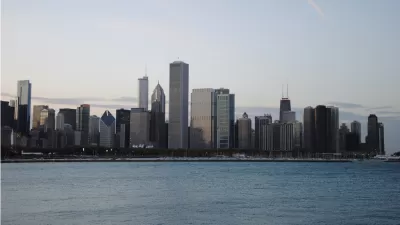The measures of urbanization vary widely, and the differences pose a challenge in developing policies and plans for cities.

Richard Florida considers the various ways in which levels of urbanism have been defined and measured. United Nations estimates say 55 percent of the global population is urban. But a new report from the European Commission puts this figure at 84 percent. The report also found higher urban levels in Asia and Africa.
The differences stem from the variety of ways urbanization is reported country by country, says Florida:
According to the EC group, about half of countries define urban based on a minimum population size threshold—85 percent of countries use a threshold of 5,000 people or fewer but other countries have dramatically higher requirements, like Mali’s 30,000, Japan’s 50,000, or China’s 100,000. Only a few countries use population density as a measure of urbanization.
However, researchers from New York University say the European Commission figures are too high and the 55 percent figure is more accurate. "[Shlomo] Angel believes the most effective way to gauge urbanization is not through population or density per se, but by looking at contiguous built-up areas of 100,000 or more people," reports Florida.
Florida argues that better, more consistent standards and analysis are essential for developing effective policy. "The research, data, and urban science we have on the world’s cities and urban areas is troublingly inadequate. If building better, more resilient, more sustainable, and more prosperous cities is key to our future global well-being, it is critical that we do much better."
FULL STORY: Just How Much of the World Is Urban?

Alabama: Trump Terminates Settlements for Black Communities Harmed By Raw Sewage
Trump deemed the landmark civil rights agreement “illegal DEI and environmental justice policy.”

Study: Maui’s Plan to Convert Vacation Rentals to Long-Term Housing Could Cause Nearly $1 Billion Economic Loss
The plan would reduce visitor accommodation by 25% resulting in 1,900 jobs lost.

Planetizen Federal Action Tracker
A weekly monitor of how Trump’s orders and actions are impacting planners and planning in America.

Waymo Gets Permission to Map SF’s Market Street
If allowed to operate on the traffic-restricted street, Waymo’s autonomous taxis would have a leg up over ride-hailing competitors — and counter the city’s efforts to grow bike and pedestrian on the thoroughfare.

Parklet Symposium Highlights the Success of Shared Spaces
Parklets got a boost during the Covid-19 pandemic, when the concept was translated to outdoor dining programs that offered restaurants a lifeline during the shutdown.

Federal Homelessness Agency Places Entire Staff on Leave
The U.S. Interagency Council on Homelessness is the only federal agency dedicated to preventing and ending homelessness.
Urban Design for Planners 1: Software Tools
This six-course series explores essential urban design concepts using open source software and equips planners with the tools they need to participate fully in the urban design process.
Planning for Universal Design
Learn the tools for implementing Universal Design in planning regulations.
Caltrans
Smith Gee Studio
Institute for Housing and Urban Development Studies (IHS)
City of Grandview
Harvard GSD Executive Education
Toledo-Lucas County Plan Commissions
Salt Lake City
NYU Wagner Graduate School of Public Service





























